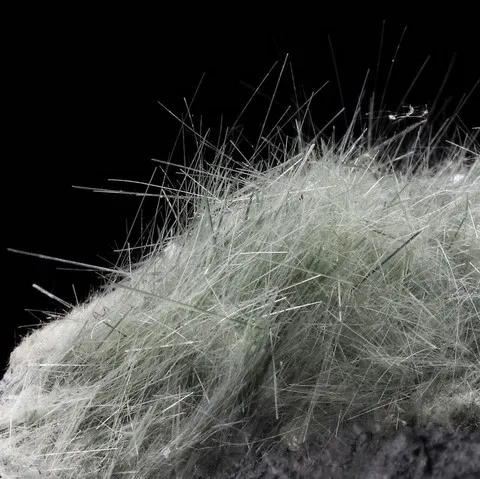BYSSOLITE
Class : Silicates
Subclass : Inosilicates
Crystal system : Monoclinic
Chemistry : Ca2(Mg,Fe)5Si8O22(OH)2
Rarity : Fairly common
Byssolite is an asbestiform variety of actinolite, common in alpine deposits, especially alpine clefts. Its name comes from the Greek bussos (cloth) and lithos (stone), alluding to the fibrous appearance of its crystals. Usually pale greenish-grey in color, byssolite forms very fine mats or aggregates. It is frequently associated with chlorite, epidote and talc, as well as many other minerals resulting from metamorphism. It is part of "asbestos" and has been used for the manufacture of fire retardants.
Byssolite in the World
Twinning
Simple and parallel twins on {100}; lamellar and parallel to {001} but not visible to the naked eye.
Fakes and treatments
No fake identified for this mineral species.
Hardness : 5 to 6
Density : 3.03 to 3.24
Fracture : Irregular
Streak : White
TP : Translucent to transparent
RI : 1.613 to 1.666
Birefringence : 0.023
Optical character : Biaxial -
Pleochroism : None
Fluorescence : None
Solubility : Insoluble
Magnetism : Paramagnetic
Radioactivity : None

